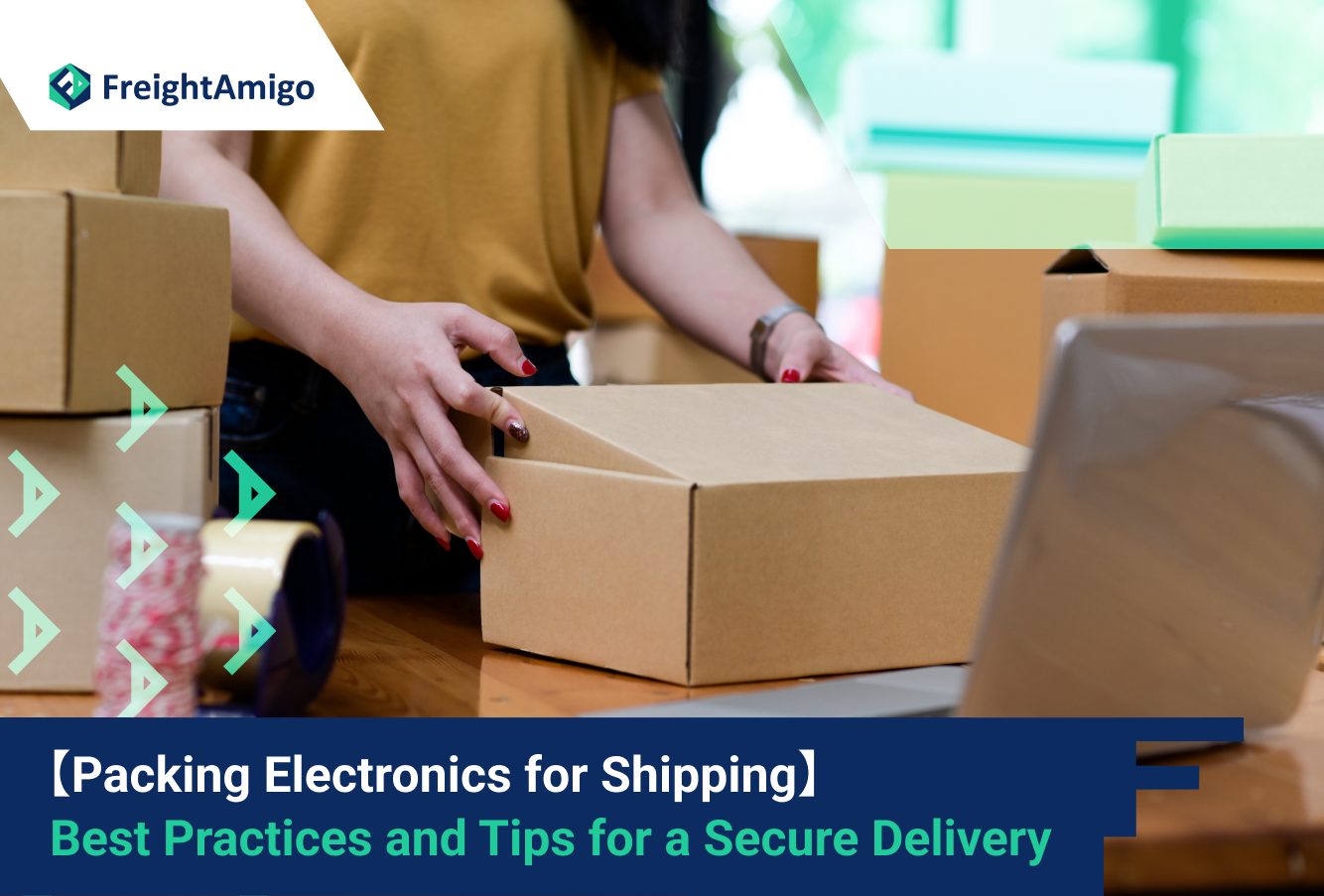January 3rd, 2024: Maya Wong – Marketing Analyst at FreightAmigo
In today’s booming electronic commerce industry, shipping electronics has become a crucial aspect of delivering products to customers. However, with delicate and fragile electronic devices, proper packaging is essential to ensure a secure and damage-free delivery. In this comprehensive guide, we will explore the best practices and tips for packing electronics for shipping, providing you with the knowledge and expertise to safely transport your products to customers around the world.
Want To Compare The Best Express, Air Freight, Sea Freight, Rail Freight & Trucking Rates So As To Have Better Control On Cost?
Understanding the Importance of Proper Packaging
When it comes to shipping electronics, the significance of proper packaging cannot be overstated. Electronics are sensitive to various environmental factors, including temperature, motion, and g-forces, which can cause damage to delicate components. Therefore, choosing the right packaging materials and techniques is crucial to protect the items during transit.
Step 1: Prepare and Organize
Before you start packing your electronics, it’s important to gather all the necessary components and accessories. Collect user manuals, cables, chargers, and any other relevant items that accompany the electronic device. This will ensure that everything is accounted for and properly packaged.
Step 2: Choose the Right Packaging Materials
When it comes to packaging electronics, it’s best to use a combination of protective materials to create a secure and cushioned environment. Consider using the following materials:
- Bubble Wrap: Wrap each individual electronic item in bubble wrap to provide a layer of protection against impact and vibration.
- Foam Inserts: Use foam inserts to fill any empty spaces within the packaging box and provide additional cushioning.
- Anti-Static Packaging: If your electronics are sensitive to static electricity, use anti-static packaging materials to prevent any potential damage.
- Customized Boxes: Consider investing in custom shipping boxes that are tailored to the dimensions of your electronic goods. This will ensure a snug fit and reduce the risk of movement during transit.
Step 3: Securely Pack the Electronics
When packing electronics, it’s important to follow a systematic approach to ensure maximum protection. Here’s a step-by-step guide for securely packing your electronics:
- Wrap each electronic item individually with bubble wrap, ensuring that all corners and edges are adequately protected.
- Place the wrapped items in the custom shipping box, making sure to fill any empty spaces with foam inserts or additional packaging materials.
- Securely seal the box using high-quality packing tape, ensuring that it is tightly closed and all edges are properly sealed.
- Label the box as “fragile” to alert shipping carriers to handle it with care.
Step 4: Choose the Right Shipping Carrier
Selecting the right shipping carrier is crucial for the safe delivery of your electronics. Consider factors such as value, speed, and service when choosing a carrier. Here are some popular shipping carriers and their recommended services for shipping electronics:
- USPS: USPS offers competitive pricing and high-quality service for shipping electronics. However, packages containing lithium batteries can only be shipped via their Ground service.
- UPS: UPS provides convenient solutions for shipping electronics, including specialty electronics packaging and services for high-volume or heavy-weight orders.
- FedEx: FedEx offers padded packaging specifically designed for shipping electronic devices. They also provide services for shipping high-volume or heavy-weight electronics orders.
Step 5: Understand Shipping Costs and Transit Times
The cost of shipping electronics varies depending on factors such as package weight, dimensions, and the distance it needs to travel. It’s important to compare rates between carriers to ensure you are getting the best price. Additionally, transit times vary based on the carrier and service level chosen. Consider weekends, holidays, and carrier closures when estimating delivery dates.
Step 6: Consider Additional Protection Measures
To provide extra protection for your electronics during shipping, consider the following measures:
- Signature Confirmation: Require signature confirmation upon delivery to ensure the package is received by an adult and prevent theft or false claims of non-delivery.
- Shipping Insurance: Purchase shipping insurance to protect against potential damage, loss, or theft during transit. Be aware of any limitations or exclusions for certain electronic items.
- International Shipping Considerations: When shipping electronics internationally, ensure compliance with customs regulations, packaging requirements, and any additional taxes or fees that may apply.
Conclusion
Proper packaging is essential for shipping electronics safely and securely. By following these best practices and tips, you can minimize the risk of damage and ensure a positive customer experience. Remember to choose the right packaging materials, select a reliable shipping carrier, and consider additional protection measures to provide peace of mind throughout the shipping process. With these guidelines, you can confidently ship your electronics to customers worldwide, knowing they will arrive in excellent condition.
There are different options for cargo transportation. If you want to choose the most convenient and suitable solution, it is best to have the full support of logistics experts! If you are planning to ship goods overseas, please go to the FreightAmigo page for inquiries.
===
Read More:
How to ship electronics: A Comprehensive Guide
The Ultimate Guide to Packaging for Shipping Electronics
How to Safely Ship Your Precious Gaming PC
===
If you have any inquiries on logistics/supply chain, feel free to contact FreightAmigo now:
Chat with us online OR Phone : +852 28121686 OR WhatsApp: +852 27467829









































